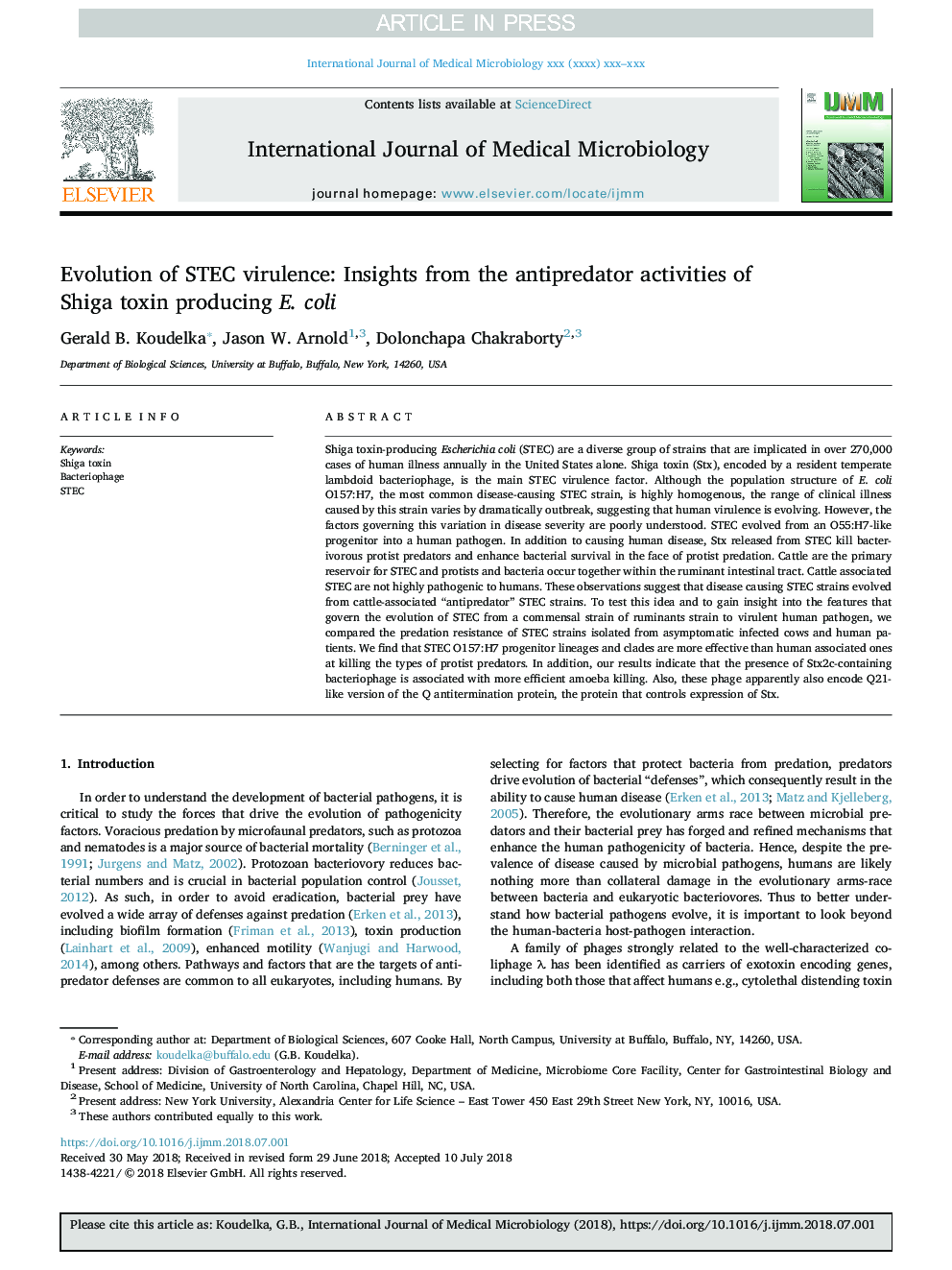| کد مقاله | کد نشریه | سال انتشار | مقاله انگلیسی | نسخه تمام متن |
|---|---|---|---|---|
| 10157237 | 1666452 | 2018 | 6 صفحه PDF | دانلود رایگان |
عنوان انگلیسی مقاله ISI
Evolution of STEC virulence: Insights from the antipredator activities of Shiga toxin producing E. coli
دانلود مقاله + سفارش ترجمه
دانلود مقاله ISI انگلیسی
رایگان برای ایرانیان
موضوعات مرتبط
علوم زیستی و بیوفناوری
بیوشیمی، ژنتیک و زیست شناسی مولکولی
بیوشیمی، ژنتیک و زیست شناسی مولکولی (عمومی)
پیش نمایش صفحه اول مقاله

چکیده انگلیسی
Shiga toxin-producing Escherichia coli (STEC) are a diverse group of strains that are implicated in over 270,000 cases of human illness annually in the United States alone. Shiga toxin (Stx), encoded by a resident temperate lambdoid bacteriophage, is the main STEC virulence factor. Although the population structure of E. coli O157:H7, the most common disease-causing STEC strain, is highly homogenous, the range of clinical illness caused by this strain varies by dramatically outbreak, suggesting that human virulence is evolving. However, the factors governing this variation in disease severity are poorly understood. STEC evolved from an O55:H7-like progenitor into a human pathogen. In addition to causing human disease, Stx released from STEC kill bacterivorous protist predators and enhance bacterial survival in the face of protist predation. Cattle are the primary reservoir for STEC and protists and bacteria occur together within the ruminant intestinal tract. Cattle associated STEC are not highly pathogenic to humans. These observations suggest that disease causing STEC strains evolved from cattle-associated “antipredator” STEC strains. To test this idea and to gain insight into the features that govern the evolution of STEC from a commensal strain of ruminants strain to virulent human pathogen, we compared the predation resistance of STEC strains isolated from asymptomatic infected cows and human patients. We find that STEC O157:H7 progenitor lineages and clades are more effective than human associated ones at killing the types of protist predators. In addition, our results indicate that the presence of Stx2c-containing bacteriophage is associated with more efficient amoeba killing. Also, these phage apparently also encode Q21-like version of the Q antitermination protein, the protein that controls expression of Stx.
ناشر
Database: Elsevier - ScienceDirect (ساینس دایرکت)
Journal: International Journal of Medical Microbiology - Volume 308, Issue 7, October 2018, Pages 956-961
Journal: International Journal of Medical Microbiology - Volume 308, Issue 7, October 2018, Pages 956-961
نویسندگان
Gerald B. Koudelka, Jason W. Arnold, Dolonchapa Chakraborty,